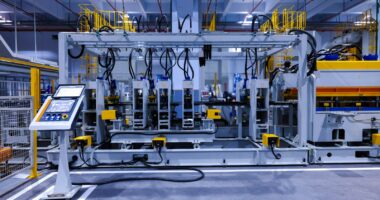Property value doesn’t maintain itself. It requires consistent attention, smart investments, and knowing where to focus your efforts.
Most property owners react to problems instead of preventing them. They wait until something breaks, then spend more fixing damage than they would have spent on maintenance. That’s backwards and expensive.
Strategic upkeep protects your investment and keeps property values climbing. Let me show you how to approach this intelligently.
Focus on High-Impact Maintenance First
Not all maintenance tasks affect property value equally. Some improvements return significant value, while others barely move the needle.
Start with the basics that buyers and appraisers notice immediately. Roof condition, exterior paint, landscaping, and HVAC systems top the list. These elements create first impressions and signal overall property care.
In fact, a well-maintained exterior suggests a well-maintained interior. The reverse is also true. Peeling paint or a damaged roof makes potential buyers assume everything else is neglected too.
Moreover, structural and safety issues always take priority over cosmetic upgrades. Fix foundation cracks before repainting rooms. Address drainage problems before installing new flooring.
Create a Preventive Maintenance Schedule
Reactive maintenance costs more and causes more damage than preventive care. You need a systematic approach to property upkeep.
Build a maintenance calendar that schedules tasks by season and frequency. Some items need monthly attention, others quarterly or annually. The catch? You actually have to follow the schedule, not just create it.
Here’s what works: set reminders on your phone or use property management software. Break large tasks into smaller, manageable chunks. Frankly, most people skip maintenance because it feels overwhelming, not because it’s actually difficult.
Additionally, keep detailed records of all maintenance performed. This documentation proves care to future buyers and helps you spot patterns in repairs.
Protect Against Weather-Related Damage
Weather causes more property damage than any other factor. Prevention here saves thousands in repair costs.
Inspect vulnerable areas before severe weather seasons. Check for weak spots in your roof, clean gutters, seal windows and doors, and verify drainage systems work properly. Sure, this takes time, but water damage from one storm can cost more than years of preventive care.
For properties in cold climates, winter preparation becomes especially critical. Installing systems like roof heating cable prevents ice dams that damage shingles, gutters, and interior spaces. Think about it: a few hundred dollars in prevention beats thousands in roof and water damage repairs.
The truth? Most weather damage happens because owners ignored obvious vulnerabilities.
Invest in Quality Over Quick Fixes
Cheap repairs rarely last and often create bigger problems down the road. Quality materials and workmanship cost more upfront but less over time.
When replacing major components, choose mid to high-grade options. Budget materials might save money today but typically need replacement sooner. Quality fixtures, appliances, and finishes hold value better and appeal more to buyers.
That said, you don’t need luxury everything. Focus quality investments on high-use areas and visible components. Even better, balance durability with market expectations for your property type and location.
Let me be honest: the cheapest option usually isn’t the smartest one.
Keep Interiors Fresh and Functional
Interior condition directly impacts property value and livability. Small updates can yield significant returns.
Address wear and tear promptly. Patch holes, touch up paint, replace worn flooring, and fix broken fixtures. These small repairs prevent bigger problems and maintain a move-in ready appearance.
Moreover, update outdated elements strategically. Swap old light fixtures, refresh cabinet hardware, modernize faucets. These inexpensive changes create a more current look without major renovation costs.
The reality is simple: fresh, well-maintained interiors attract better tenants and higher offers when selling.
Maintain Outdoor Spaces Consistently
Landscaping and outdoor areas significantly influence property value perception. Neglected exteriors suggest neglected properties.
Keep lawns mowed, hedges trimmed, and flowerbeds weeded. Remove dead plants and replace them seasonally. Additionally, pressure wash walkways, driveways, and siding annually. What’s interesting is how much curb appeal impacts buyer interest before they even enter the property.
For rental properties, attractive outdoor spaces justify higher rents and attract quality tenants. Honestly, the return on basic landscaping maintenance exceeds almost any interior upgrade.
Address Safety and Accessibility Needs
Safety issues tank property values fast. Buyers and tenants notice hazards, and inspections expose them regardless.
Fix obvious safety concerns immediately: loose railings, uneven walkways, inadequate lighting, faulty electrical, and plumbing leaks. These aren’t optional maintenance items; they’re liability risks.
Additionally, consider accessibility improvements that broaden your property’s appeal. Wider doorways, grab bars, and step-free entries make properties suitable for more buyers and tenants. Services like home care for seniors often recommend accessibility features that increase both safety and property value.
The catch? Accessibility upgrades often cost less than you’d expect and significantly expand your potential buyer pool.
Choose Durable, Timeless Design Elements
Trendy designs date quickly and turn off buyers who don’t share your taste. Classic choices maintain appeal longer.
Select neutral colors for walls, flooring, and major fixtures. Save bold choices for easily changeable elements like pillows or artwork. In fact, neutral doesn’t mean boring; it means broadly appealing.
When selecting furnishings or built-ins, prioritize quality and timelessness over current trends. Options like best high quality furniture that emphasize durability and classic design maintain value better than trendy pieces that feel dated in five years.
That said, some updates do matter. Kitchens and bathrooms should feel current even if not cutting-edge. These rooms influence buying decisions more than any others.
Monitor and Address Small Issues Quickly
Small problems become big problems when ignored. Catching issues early saves money and prevents value loss.
Walk through your property monthly. Look for new cracks, leaks, stains, or unusual sounds. Check appliances, test smoke detectors, and inspect areas prone to moisture. Moreover, encourage tenants to report issues immediately rather than waiting until they worsen.
Create a simple inspection checklist so you don’t miss common trouble spots. The reality is straightforward: a $50 repair today prevents a $5,000 repair tomorrow.
Frankly, most expensive property problems started as minor issues someone noticed but didn’t fix.
Track Your Property’s Market Position
Understanding how your property compares to similar ones helps you make smart maintenance decisions. You can’t improve value without knowing where you stand.
Research comparable properties in your area quarterly. Note their condition, features, and asking prices. This competitive analysis reveals which improvements would increase your value most.
Additionally, talk to local real estate agents about market trends. What features are buyers requesting? Which updates provide the best returns? Let me be honest: gut instinct about improvements often misses what the market actually values.
Compare Maintenance Approaches
| Maintenance Type | Reactive Approach | Preventive Approach |
|---|---|---|
| Roof Care | Wait for leaks to appear | Annual inspections and minor repairs |
| HVAC Systems | Replace when they fail completely | Regular servicing and filter changes |
| Plumbing | Fix only when problems arise | Periodic checks for leaks and pressure |
| Exterior Paint | Repaint when severely weathered | Touch-ups and full paint every 7-10 years |
| Landscaping | Minimal care, sporadic attention | Consistent weekly/monthly maintenance |
Calculate Maintenance Returns
| Improvement Area | Typical Cost | Value Return | Best For |
|---|---|---|---|
| Roof Replacement | $8,000-$15,000 | 60-70% | Properties with visible damage |
| HVAC Upgrade | $5,000-$10,000 | 50-60% | Systems over 15 years old |
| Fresh Exterior Paint | $3,000-$6,000 | 70-80% | Faded or peeling surfaces |
| Kitchen Update | $15,000-$35,000 | 60-80% | Outdated layouts or appliances |
| Landscaping Improvement | $2,000-$5,000 | 100-200% | Poor curb appeal properties |
Budget Appropriately for Ongoing Care
Property maintenance requires consistent financial commitment. Underfunding maintenance guarantees declining value.
Set aside 1-2% of your property’s value annually for maintenance and repairs. Higher percentages apply to older properties or those in harsh climates. The catch? This money needs to stay separate from other funds, not borrowed from when cash gets tight.
Track all maintenance spending to understand your true costs. This data helps you budget accurately and identifies which systems or areas require disproportionate investment. Sure, some years you’ll spend less, but the reserve covers years when major systems need replacement.
Work With Reliable Contractors
The quality of work matters as much as the work itself. Bad contractors waste money and damage properties.
Build relationships with reliable plumbers, electricians, roofers, and general contractors before emergencies happen. Get recommendations, check references, and verify licenses and insurance. Even better, use the same trusted professionals repeatedly instead of finding new ones for each job.
Moreover, establish fair pricing upfront. Get multiple quotes for large projects, but don’t automatically choose the lowest bid. The cheapest contractor often cuts corners that cost more later.
The Bottom Line
Property value maintenance isn’t complicated, but it does require consistency and smart priorities. Focus on high-impact areas first, prevent problems before they start, and invest in quality when it matters.
Create a maintenance schedule and actually follow it. Address weather vulnerabilities, keep interiors fresh, maintain outdoor spaces, and fix small issues before they become big ones. Choose timeless design, work with reliable contractors, and budget appropriately for ongoing care.
The properties that hold value best aren’t the newest ones. They’re the ones whose owners understand that consistent, strategic upkeep protects their investment better than any market timing or renovation trend.
Your property’s future value depends on the maintenance decisions you make today.












